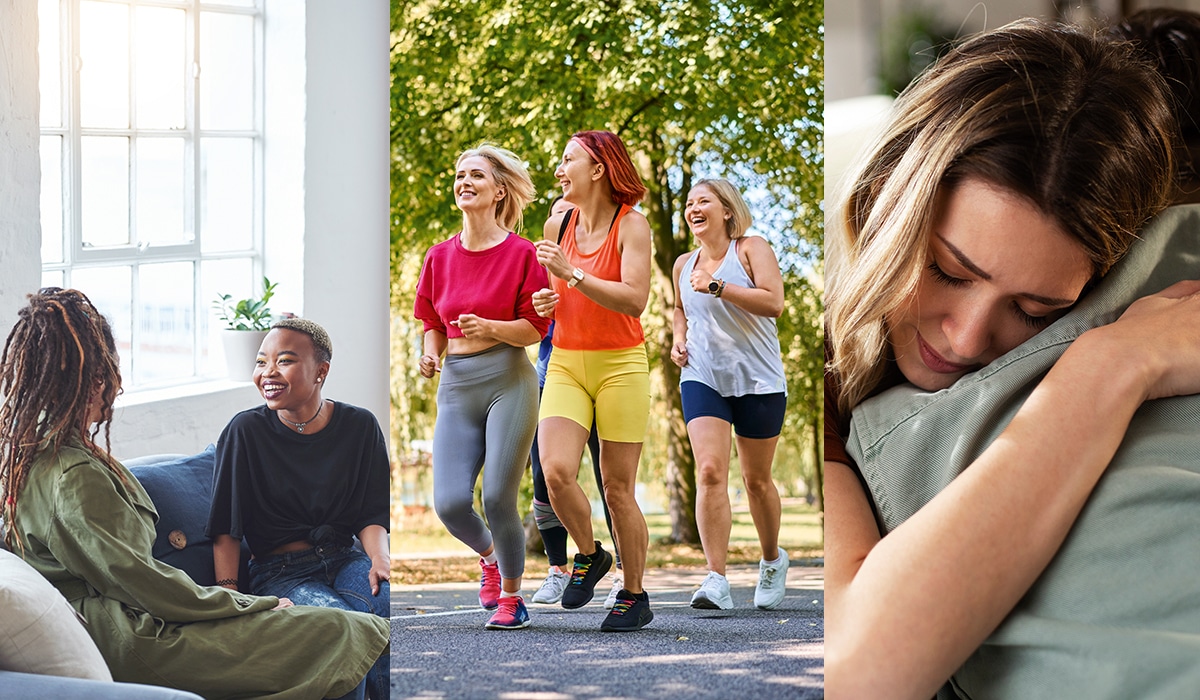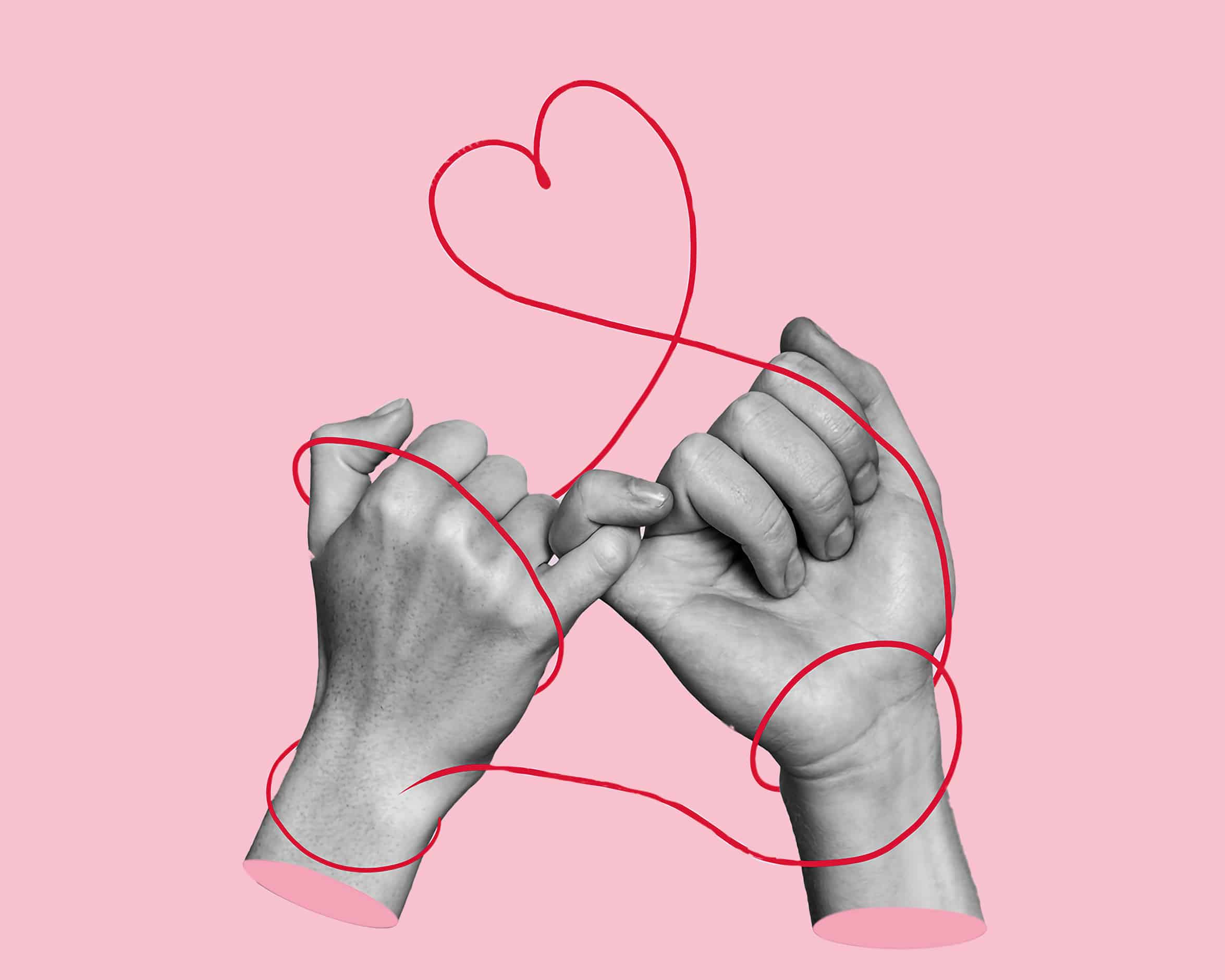While such a profound connection may feel like a once-in-a-lifetime occurrence, here’s good news: new research shows that ‘clicking’ is a real phenomenon – and anyone can harness its power.
The click
You meet someone at a party and spend the rest of the evening glued to your own private conversation. You join an adult sports team and instantly bond with one of your new teammates. Or, perhaps, it’s a breath-taking connection you have with that guy you’ve seen at Seattle every day for weeks, but have never spoken a word to until now.
It feels magical, intense and rare… yet according to researchers Ori and Rom Brafman, authors of Click: The Magic of Instant Connections, the almost audible click you hear when you make a deep and instant connection with another person is very real and creates a far more profound bond than we realise.
“In other contexts, the words ‘quick’ and ‘instant’ don’t necessarily sound like positive descriptions – think instant coffee or quick TV dinners,” says psychologist Rom. “But when it comes to human relationships, the bonds formed by quick-set intimacy can be surprisingly strong and create a tenor in the relationship that may be lifelong.”
Such relationships can make you feel better – and perform better, too. The minds of those who feel such euphoric associations have extraordinarily active receptors for the mood-elevating neurotransmitter, dopamine, according to a 2005 brain scan study conducted by noted American social psychologist Dr Arthur Aron.
“The ‘click’ is more than a good feeling,” says Rom. “It changes dynamics. You become more creative, more efficient, you feel a lot better and your relationships are stronger.” In fact, he adds, studies show that rather than wasting time chatting, ‘clicking’ co-workers are actually more productive and efficient problem-solvers. “They argue more, so that instead of everyone conceding, there’s real intellectual honesty.”
Yet with technology’s increasing presence in our lives, face-to-face contact is eroded by email and social networking. While technology can enhance some aspects of ‘clicking’ through sheer accessibility, “it’s really difficult to make a best friend or confidante over the internet,” says Rom. “It keeps the heat low and on the back-burner. It can spark a friendship, but it’s harder to build up a friendship.” For that, you need the five critical factors that help make the click count and continue:
1. Vulnerability
Being vulnerable means you are exposed, susceptible and more likely to form a bond, says Rom. “Allowing yourself to be vulnerable helps the other person to trust you, precisely because you are putting yourself at emotional, psychological or physical risk,” he explains. “Other people tend to react by being more open and vulnerable themselves.”
And it works. In a 2006 American study of internet dating, investigators found that those who share more personal information with others had better success with online love. But how much sharing is enough? According to Rom, there’s a fine line between opening up and giving too much information. Conversations have five stages – but if you click, you breeze through the first three.
The least vulnerable stages are phatic conversations, or social niceties that mean little, followed by factual (“I live in Joburg. What do you do for a living?”) and evaluative statements (“I like your style”), which reveal what we think about others and the world around us.
However, the potential to ‘click’ grows in the most revealing conversational stages – emotionally laden, gut-level remarks (“I’m so glad I met you”) and peak statements (“I am worried I won’t be a good mother”), which are truly illuminating and the most open to critics. Yet many times, he says, “we fail to self- disclose because we don’t realise just how powerful it is in establishing intimacy. But if done at the right time, with the right person, it can transform a relationship.
2. Proximity
When it comes to bonding, the closer you are physically and visually, the greater your chances. Researchers at Eastern Michigan University who examined friendships amongst police cadets proved the point. In 90% of cases, the cadets formed relationships with people whose last names started with the same letter. Why? They were seated alphabetically throughout their course.
“These connections weren’t all of the knock-your-socks-off, instant-best- friend variety,” observes Rom. “Still, the pattern was so strong and robust that it points to an important phenomenon.” Psychologists put it down to spontaneous communication – the “unplanned, ordinary conversations and exchanges that occur when people interact serendipitously because they are in the same place at the same time,” he says. “There’s tremendous power in casual conversations and interactions. They create the social glue.”
In other words, to build personal or business relationships, “it makes much more sense to attend a meeting in person rather than dial in, and to walk over to a colleague’s or employee’s desk rather than send an email. It makes more sense to simply stand closer to someone you want to meet at a party,” he adds, “than to look across the crowded room.”

3. Resonance
Being ‘in the zone’ and ‘completely present’ may sound like New-Age buzz words, but they are also critical for resonating with others. “When we achieve resonance – the combination of flow and presence – that state doesn’t just temporarily alter the relationship, it actually changes those around us,” says Rom. In fact, achieving resonance or that charismatic moment when you feel utterly comfortable with yourself, is actually contagious.
Part of the reason is mirror neurons, which ‘copycat’ behaviours and emotions in others. “We tend to empathise with the feelings and qualities that we perceive in others,” says Rom. “When we’re around someone who is in a state of resonance, we’re more likely to enter that state as well. As a result, we’re more likely to click.”
4. Similarity
When it comes to clicking, it seems that opposites don’t attract. “Similarity, no matter what form it takes, leads to greater likeability,” says Rom. “When we discover a shared trait with someone we’ve just met, we’re more likely to perceive that person as part of what psychologists call our ‘in-group’.
We perceive in-group members in a more favourable light; we think of them as more attractive and better people. This drive is so strong, so deeply ingrained in us, that casual conversations that reveal similarities naturally trigger the in-group response.”
The in-group will even make you behave differently. In 2004, researchers at California’s Santa Clara University found that women asked to make a donation to a charity actually doubled their contribution if the volunteer wore a tag with the same name as the woman.
“Once we accept people into our in-group, we’re kinder to them, more generous,” observes Rom. “Vulnerability helps to allow others into our lives while laying bare who we are. Physical proximity encourages us to see the people around us as individuals. Resonance encourages us to share that experience. And similarity helps to foster or facilitate a connection.”
5. Environment
War veterans, immigrants and mountain climbers all experience it: a sense of community born out of common goals and adversity. In fact, a 40-year study of American military veterans found that those who had experienced deadly combat were twice as likely to maintain lifelong friendships with their comrades.
And that tight-knit community can be found anywhere – a happy workplace, an art class or even a preschool group. In the way that they draw people together, communities also accentuate the potential to click, explains Rom. “Spending time in close quarters, of course, triggers the proximity response.
Being a part of the same community helps to create a sense of being part of an in-group. Feeling safe and experiencing adversity together help to make us more open and willing to be vulnerable. The frame, in other words,” he says, “helps to amplify the other accelerators.” And the first step? Putting yourself out there. You never know who you might click with…
By: Julie Beun
Words by: ARE MEDIA/MAGAZINEFEATURES.CO.ZA
Illustration & Photographs: Shutterstock
Also read: How your job can hurt your relationship







